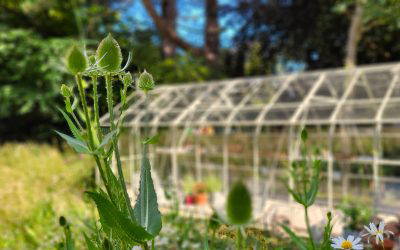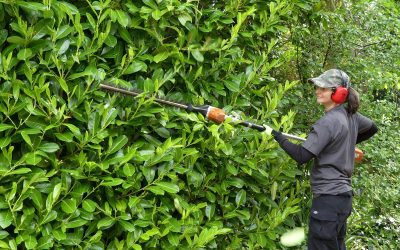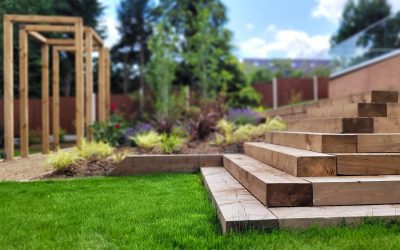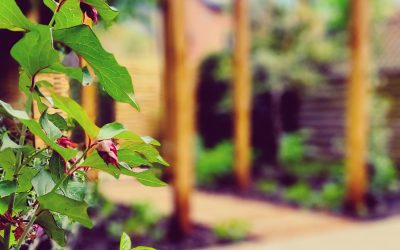Step into a world where your outdoor space becomes an extension of your home, a sanctuary to relax and entertain. People are looking for Professional landscaping services in Altrincham, where the charm of suburban life meets the beauty of nature, transforming your garden into a breathtaking landscape is not just a dream—it’s entirely achievable. Whether you have a modest backyard or a sprawling garden, this ultimate guide to landscaping will provide you with all the tools, tips, and inspiration needed to create a stunning outdoor oasis. From selecting the ideal plants that thrive in the local climate to incorporating eye-catching features like pathways and water elements, we’ll explore innovative ideas that suit every style and budget. Unleash your creativity and discover how to enhance your home’s curb appeal while creating a space that reflects your personality. Get ready to dig in, as we turn your landscaping vision into reality!
Before you embark on your landscaping journey, the first step is to thoroughly understand your outdoor space. Assessing your garden’s dimensions, soil quality, sunlight exposure, and existing vegetation will provide a clear blueprint for your design. Start by mapping out the area, noting any unique features such as slopes, shaded regions, or water drainage patterns. Understanding these details will help you make informed decisions about plant selection, structural elements, and overall layout.
Consider the microclimates within your garden. Different sections may receive varying amounts of sunlight, wind, and moisture, which can significantly impact plant growth. Observe your garden at different times of the day to understand these patterns. This knowledge will enable you to position plants and structures in the most suitable spots, ensuring they thrive and contribute to a cohesive design.
Additionally, take into account your garden’s function and how you envision using the space. Are you looking to create a serene retreat, a lively entertainment area, or a productive vegetable garden? Identifying your needs and desires will guide your design choices and ensure that your outdoor space serves its intended purpose. By thoroughly assessing your garden, you’ll lay a solid foundation for a successful landscaping project.
Key Elements of Landscaping Design
A well-designed landscape balances aesthetics, functionality, and sustainability. Key elements of landscaping design include structure, color, texture, and scale. Structure refers to the layout and organisation of different areas within your garden. Think about creating distinct zones for relaxation, dining, and gardening, and use pathways or hedges to delineate these spaces. This organisation not only enhances the visual appeal but also improves the practical use of your garden.
Color plays a vital role in landscaping, influencing the mood and perception of your space. Choose a color palette that complements your home’s exterior and creates harmony. Consider the seasonal changes in foliage and blooms to ensure year-round interest. Mix perennials and annuals to maintain vibrant colors throughout the year. Additionally, incorporate a variety of textures through diverse plant species, hardscaping materials, and garden accessories. Contrasting textures add depth and intrigue, making your garden visually engaging.
Scale is another crucial aspect of landscaping design. Ensure that the size of plants, structures, and garden features is proportionate to your space. Large trees or oversized statues can overwhelm a small garden, while delicate flowers might get lost in a vast expanse. Balance is key—use a mix of heights and sizes to create a harmonious composition. By thoughtfully integrating these elements, you’ll achieve a landscape that is not only beautiful but also functional and inviting.
Popular Landscaping Styles for Altrincham Homes
Altrincham’s unique blend of urban and suburban charm lends itself to various landscaping styles. One popular approach is the cottage garden style, characterised by its informal, whimsical design and abundant, colorful plantings. This style emphasises natural beauty and creates a relaxed, idyllic atmosphere. Use a mix of perennials, climbing roses, and ornamental grasses to achieve this look. Incorporate rustic elements like wooden trellises, stone pathways, and vintage garden furniture to enhance the cottage aesthetic.
For a more contemporary feel, consider a modern minimalist landscape. This style focuses on clean lines, geometric shapes, and a limited color palette. Opt for sleek materials such as concrete, steel, and glass for hardscaping. Plant selection should be strategic, with an emphasis on architectural plants like bamboo, yucca, and ornamental grasses. Minimalist gardens often feature water elements, such as a sleek reflecting pool or a simple fountain, to add a touch of tranquility and sophistication.
Another trend gaining popularity in Altrincham is the sustainable garden. This style prioritises eco-friendly practices and native plants to create a landscape that supports local wildlife and reduces environmental impact. Use drought-tolerant plants, rain gardens, and permeable paving to conserve water and manage runoff. Incorporate composting and organic mulches to enrich the soil and reduce waste. A sustainable garden not only benefits the environment but also creates a resilient and low-maintenance outdoor space.
Choosing the Right Plants for Your Landscape
Selecting the right plants is crucial to the success of your landscaping project. Altrincham’s climate, with its mild winters and moderate rainfall, supports a variety of plant species. Start by choosing plants that are well-suited to the local conditions. Native plants are an excellent choice as they are adapted to the environment and require less maintenance. Some popular native plants include the foxglove, bluebell, and yarrow, which add vibrant color and attract pollinators.
Consider the growth habits and mature size of plants to ensure they fit well within your design. Group plants with similar water and light requirements together to simplify care. Layering plants by height creates depth and visual interest—tall trees and shrubs form the backdrop, medium-sized perennials fill the middle ground, and low-growing groundcovers or annuals add texture to the foreground. This tiered approach not only enhances aesthetics but also promotes a healthy plant community.
Incorporate a mix of evergreen and deciduous plants to maintain year-round interest. Evergreens provide structure and color during the winter months, while deciduous plants offer dynamic changes through the seasons. Additionally, consider the bloom time of flowering plants to ensure continuous color. Staggering bloom periods creates a garden that evolves and surprises throughout the year. By carefully selecting a diverse range of plants, you’ll create a vibrant, resilient landscape that thrives in Altrincham’s climate.
Hardscaping: Incorporating Structures and Pathways
Hardscaping elements play a vital role in defining the structure and functionality of your garden. Pathways, patios, retaining walls, and garden structures like pergolas and arbors add dimension and usability to your outdoor space. When designing pathways, consider the flow of movement through your garden. Curved paths create a sense of journey and discovery, while straight paths provide a more formal and direct route. Use materials like gravel, brick, or natural stone to complement the overall aesthetic of your garden.
Patios and seating areas are essential for creating outdoor living spaces. Position these areas to take advantage of views, sunlight, and shade. Use durable materials like concrete, pavers, or decking that can withstand the elements. Enhance the comfort and ambiance with outdoor furniture, cushions, and lighting. For added privacy, consider incorporating screens, trellises, or strategically placed plants. A well-designed patio becomes an extension of your indoor living space, perfect for entertaining or relaxing.
Garden structures such as pergolas, arbors, and gazebos add architectural interest and provide support for climbing plants. These structures can create focal points, define spaces, and offer shade and shelter. Use materials that match your garden’s style—wood for a traditional look, metal for a modern feel. Additionally, consider incorporating water features like fountains, ponds, or waterfalls. The sound of running water adds a soothing element and attracts wildlife, enhancing the sensory experience of your garden.
Sustainable Landscaping Practices
Sustainability is a growing trend in landscaping, emphasising eco-friendly practices that benefit the environment and reduce resource consumption. Start by minimising water use through efficient irrigation systems, drought-tolerant plants, and mulching. Drip irrigation and soaker hoses deliver water directly to the roots, reducing evaporation and runoff. Grouping plants with similar water needs together also conserves water and simplifies maintenance.
Soil health is fundamental to a sustainable garden. Enrich your soil with organic matter like compost and mulch to improve its structure, fertility, and water-holding capacity. Avoid chemical fertilisers and pesticides, which can harm beneficial organisms and pollute waterways. Instead, use natural alternatives like compost tea, neem oil, and companion planting to manage pests and diseases. Healthy soil supports robust plant growth and reduces the need for external inputs.
Biodiversity is another key aspect of sustainable landscaping. Plant a variety of species to create a resilient ecosystem that supports pollinators, birds, and other wildlife. Native plants are particularly valuable as they provide habitat and food sources for local species. Avoid invasive plants that can disrupt the natural balance and outcompete native flora. By fostering biodiversity, you contribute to the health of the broader environment and create a dynamic, thriving garden.
Hiring a Professional Landscaper vs. DIY
When it comes to landscaping, one of the significant decisions you’ll face is whether to hire a professional landscaper or tackle the project yourself. Each approach has its advantages and considerations. Hiring a professional landscaper brings expertise, experience, and efficiency to your project. Landscapers can provide design services, recommend suitable plants and materials, and handle the installation. Their specialised knowledge ensures a high-quality result and can save you time and effort.
However, professional landscaping services come with a cost. It’s essential to budget for design fees, labor, and materials. Communicate your vision and budget clearly to your landscaper to ensure alignment. Additionally, research and select a reputable landscaper with positive reviews and a portfolio that matches your style. A well-chosen professional can transform your garden with precision and creativity, adding value to your property.
On the other hand, a DIY approach allows you to engage deeply with your project and personalise every detail. It can be a rewarding experience that connects you with your garden and provides a sense of accomplishment. DIY landscaping may also be more cost-effective, especially for smaller projects. However, it requires time, effort, and a willingness to learn. Consider your skills, available time, and the complexity of the project before deciding. Combining both approaches—hiring a professional for complex tasks while handling simpler aspects yourself—can also be a balanced solution.
Maintenance Tips for a Beautiful Landscape
Maintaining your landscape is essential to keep it looking beautiful and healthy year-round. Regular care ensures that plants thrive, structures remain intact, and the overall aesthetic is preserved. Start with a seasonal maintenance plan that addresses the specific needs of your garden throughout the year. This plan should include tasks such as pruning, fertilising, mulching, and pest control.
Pruning is crucial for shaping plants, promoting healthy growth, and removing dead or diseased branches. Different plants have different pruning requirements, so familiarise yourself with the needs of each species in your garden. Fertilising replenishes essential nutrients in the soil, supporting robust plant growth. Choose organic fertilisers and apply them according to the specific needs of your plants. Mulching conserves moisture, regulates soil temperature, and suppresses weeds. Apply a layer of organic mulch around plants, replenishing it as needed.
Pest control is another important aspect of garden maintenance. Monitor your garden regularly for signs of pests and diseases. Use integrated pest management techniques, combining natural predators, organic treatments, and cultural practices to keep pest populations in check. Additionally, consider the long-term health of your garden by rotating crops, maintaining biodiversity, and improving soil health. Regular maintenance not only enhances the beauty of your landscape but also ensures its resilience and longevity.
Conclusion: Bringing Your Vision to Life
Transforming your outdoor space into a stunning landscape is a rewarding endeavor that enhances your home’s curb appeal and provides a personal sanctuary. By understanding your garden’s unique characteristics, incorporating key design elements, and choosing the right plants, you can create a beautiful and functional outdoor space. Embrace sustainable practices to support the environment and consider whether to hire a professional landscaper or take a DIY approach.
Remember that landscaping is an evolving process. Your garden will change and grow over time, offering new opportunities for creativity and enjoyment. Regular maintenance ensures that your landscape remains vibrant and healthy, providing a lasting retreat for relaxation and entertainment. Whether you’re cultivating a cottage garden, a modern minimalist space, or a sustainable oasis, your outdoor space reflects your personality and enhances your quality of life.
In Altrincham, where the charm of suburban life meets the beauty of nature, your dream landscape is within reach. With thoughtful planning, creativity, and care, you can transform your garden into a breathtaking outdoor oasis. Dig in, get your hands dirty, and watch your vision come to life. Your perfect garden awaits!




